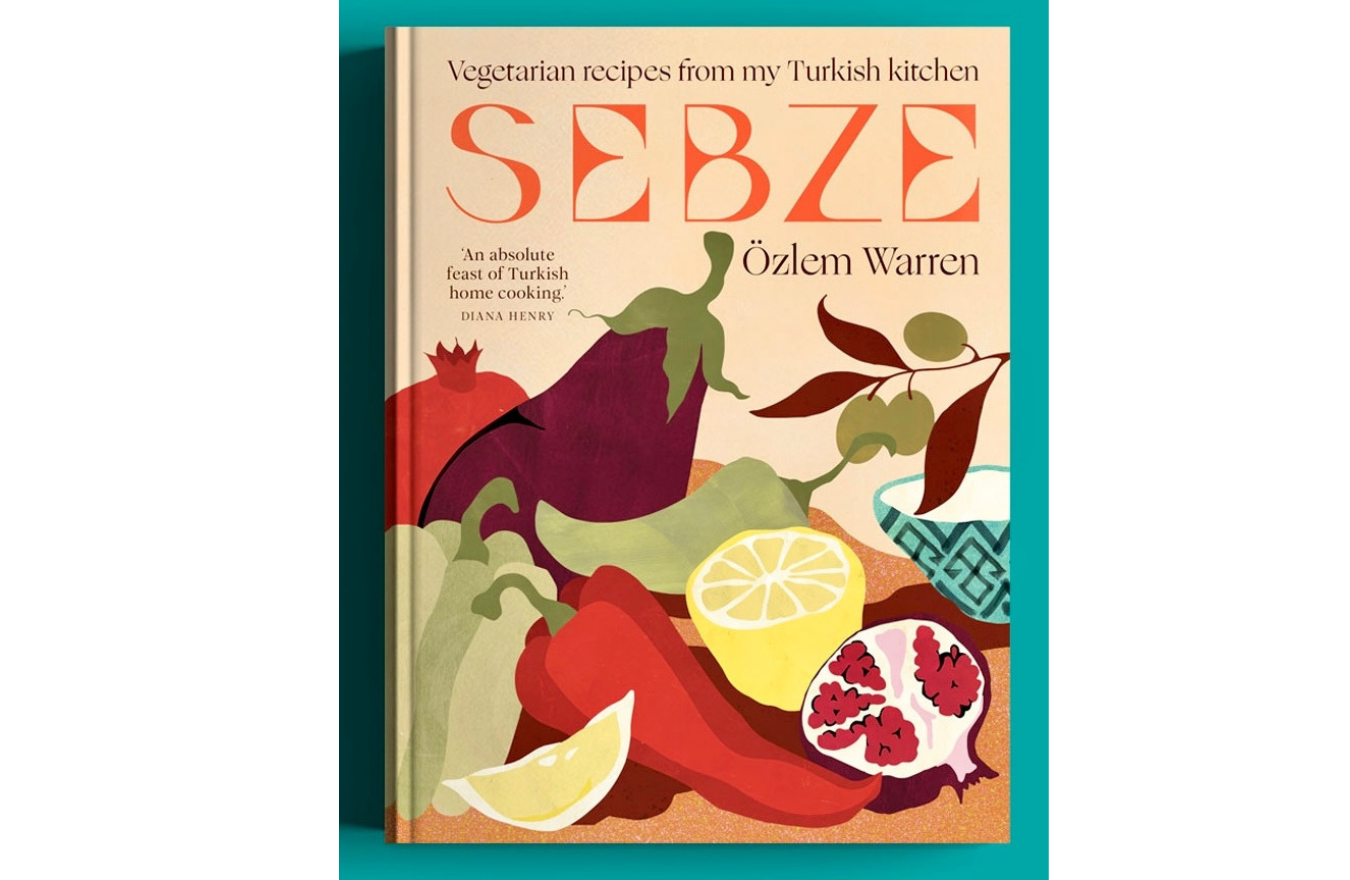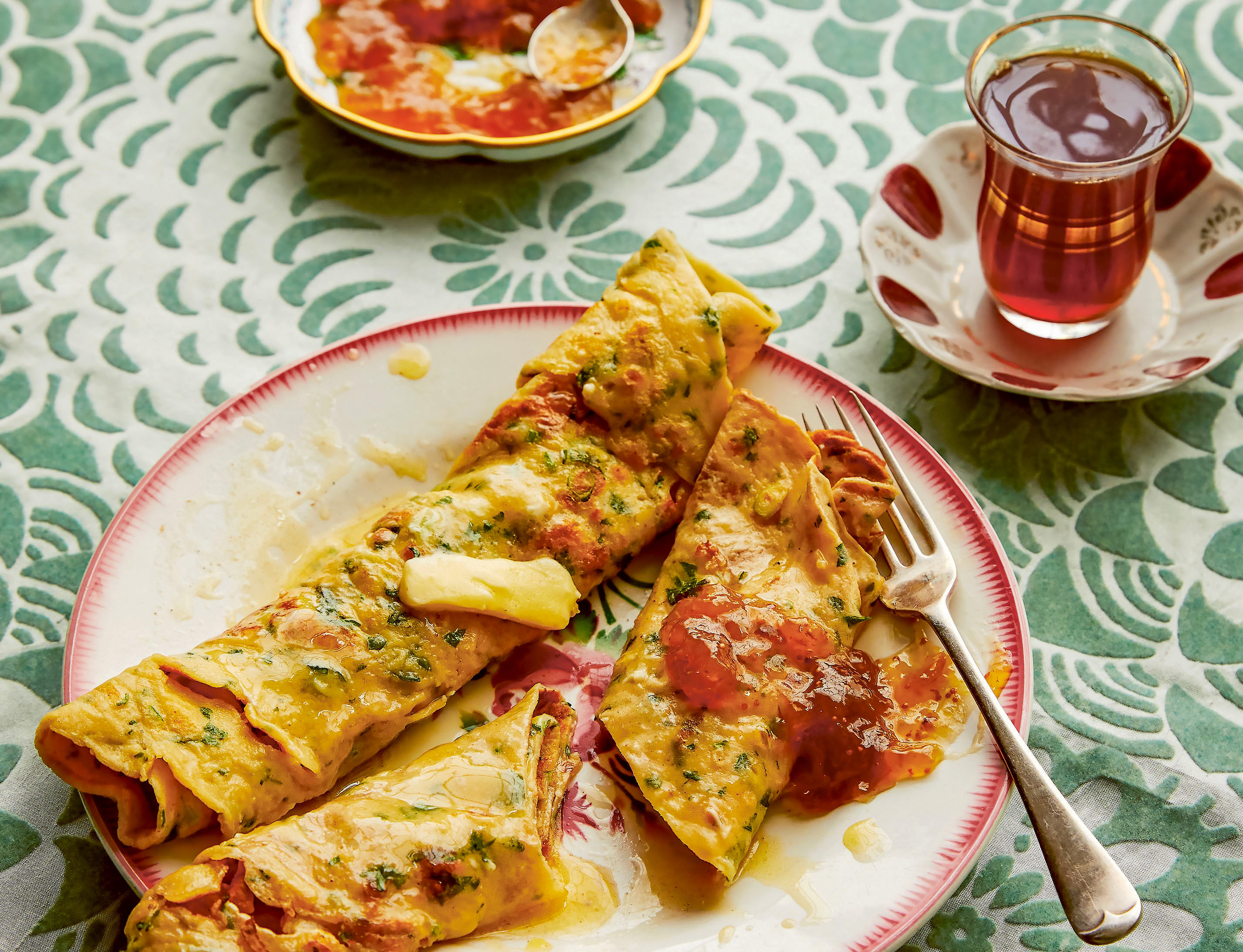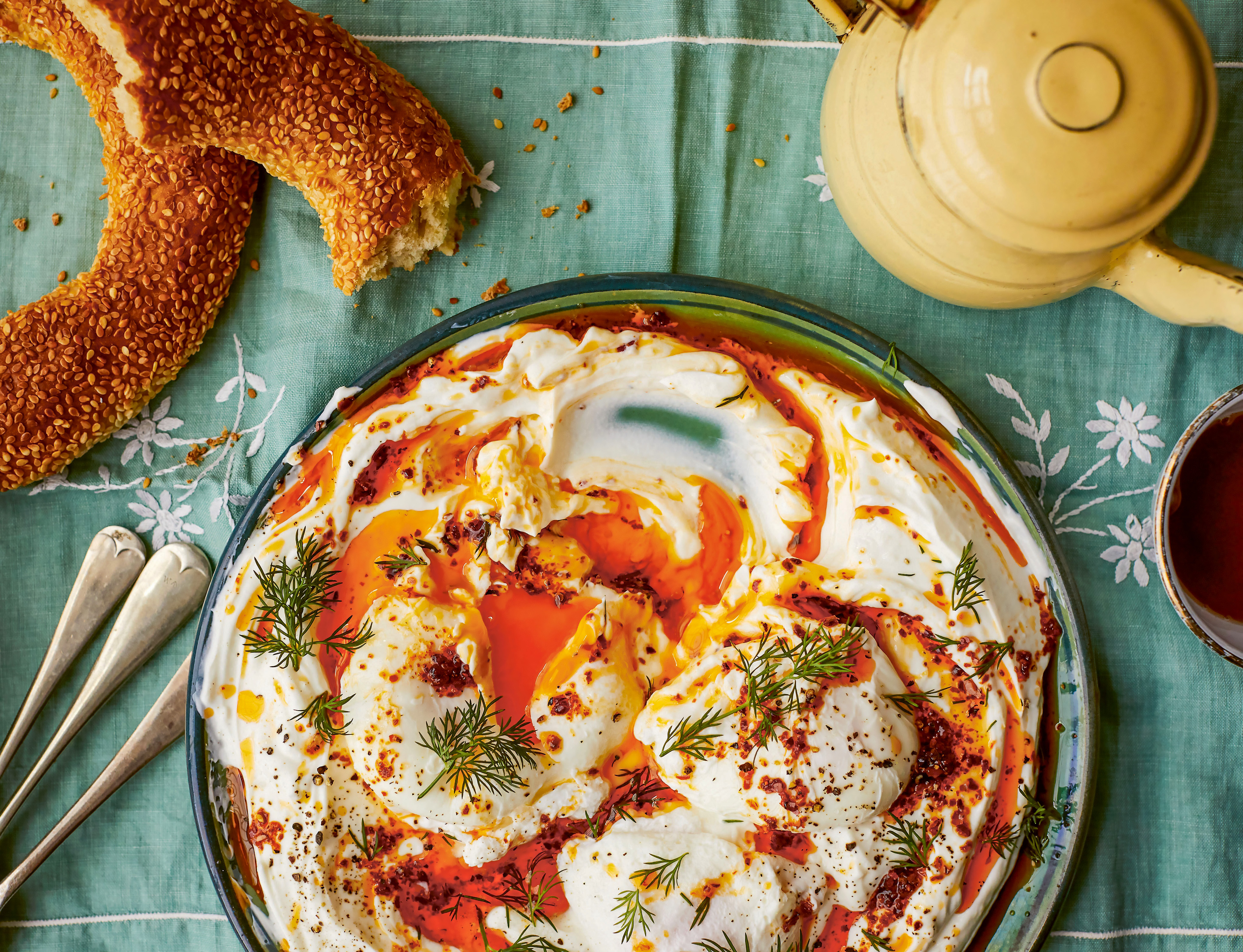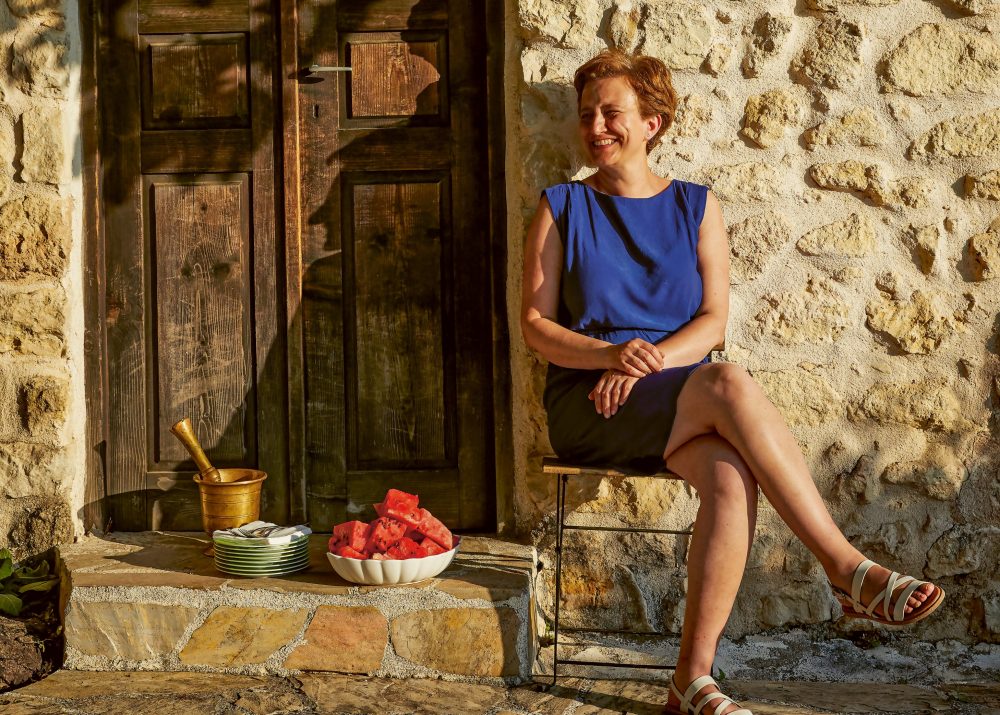
As a native of Türkiye and longtime Milk Street Cooking School teacher and magazine contributor, Özlem will be leading a Milk Street Culinary Tour through Istanbul in May, but in the meantime, she was kind enough to hop on a call with me to talk about the country’s love affair with the most important meal of the day.
Tell me a little bit about kahvalti, Turkish breakfast
The word “kahvalti” is derived from “kahve” and “altı,” which means “before coffee.” And then the two words became one—kahvalti. And it is a massive deal for us. It's my favorite meal of the day. And the reason why I call the chapter “All Day Breakfast” is I can eat this stuff all day long. It has nothing to do with just morning. We all tend to have busy lives, so I may not be able to have a feast of a breakfast, but I love it for brunch. I love it for a light supper.
The Turks have a love affair with breakfast, with different varieties of cheeses, olives, always sliced cucumbers, tomatoes, always some sort of savory pastry like börek. You go to the farmers market—the variety of olives and cheese, just galore. You get so inspired, and I end up buying four or five different olives and I smuggle them back to the UK because they are so flavorful. And I always go for the un-pitted ones, because during that process you so lose much texture and flavor. It's a bit fiddly, and I understand it may not be so convenient, and if you're in a rush pitted is absolutely fine. But there is so much inspiration and variety.
And we’re always finding ways really to cook up stuff from what you have at home. For instance, my dad absolutely adores potatoes, there's always some kind of boiled or sautéed potato around. Mom was a very busy science teacher, and when she was at school, he was like, “Ah! That's my opportunity. I'm going to take those potatoes, sauté them well, add spring onions, crack a few eggs. That's me done.” You know, here we go. We'll have it for brunch. We'll have it for breakfast. And I think it's great. I always try to say in the classes and in the books: Take the recipes as guidelines, but really make it your own. I mean, I do it with potato. Perhaps you want to do it with squash or sweet potato. Just make it your own.
Is it customary to drink tea with breakfast and have coffee after?
Absolutely. The Black Sea region has massive tea plantations, and black tea—we call it chai—black tea in that tulip stem glass is a must on the table. Everyone drinks tea with their breakfast. Coffee is always right after breakfast. And you might have a little bit of baklava perhaps, or a little cookie or something, like pistachio cookies. I have shortbread cookies in the book. That follows the main event.
So on the weekends, family will get together, you will have your newspapers and whatnot. You have this leisurely un-rushed breakfast, you might actually go down to Bosphorus, if you're in Istanbul, and see all the boats passing by. There's a ton of breakfast places. You will leisurely have your breakfast, you might have a little orange juice with the tea. Never coffee, not traditionally. And then after you have your breakfast, you order Turkish coffee, to sip in espresso-sized glasses, and it might come with a little cookie, might come with a little Turkish delight, but it's definitely something you would enjoy afterwards.
I didn't notice any sweet breakfasts in the chapter. Is that a personal or cultural preference?

That’s very much a cultural thing. We have jam—and there's a dry fig jam in the book. And we have kaygana crêpes, the Black Sea speciality. I tend to have the kaygana crêpes, which is the savory crêpe, with a lovely dry fig jam next to it with a slice of cheddar cheese, kind of combining it all together. When it comes to sweets, it's usually driven by jams, as well as honey. We might have honey and clotted cream—which is kaymak in Turkish. It's really quite heavy on the savory stuff. And it really changes region to region. In the Black Sea region they might have muhlama, which is cornmeal with this stringy kolot cheese.
I have a reel on my Instagram account, from when I went to the Black Sea region. They cook the cornmeal with water. And it's almost like a loose hummus consistency. Then they add the stringy cheese to it and the region's butter and cook it more. It's almost like an un-risen soufflé. Not liquidy but not too soft, like a warm hummus. And it needs to be made literally just before you eat it. Come straight from that pot or pan, to the table with hunks of—if you're in the Black Sea region—cornbread. It's not a sweet cornbread, but they crumble it into soup, they dip it into muhlama. It is rich, it's indulgent, but I tell you what, it's worth every calorie.
It almost sounds like southern grits crossed with pommes aligot.
Well, the Black Sea region is neighbors with southern Russia and there's the Eastern European influence, like Romania and Bulgaria, because they use a lot of cornmeal. And they have their own version, they might crack in an egg or something. So it really is driven by a geographical landscape and an exchange of culinary influences. The Ottoman empire was huge during that time, and there were lots of culinary exchanges.
What's a typical busy weekday morning breakfast?
If you are on a busy workday schedule, you will definitely have either some kind of Turkish-style flatbread—pide bread, we call it—or simit, the sesame-encrusted bread, definitely some sliced olives, and tomatoes. And you might knock up a quick menemen—scrambled eggs with vegetables. Or, if you have a little bit of time, if you have any leftover bread—that's what mom used to do for a quick breakfast—we pop some eggs, whatever veg was leftover, a bit of cheese, on the bread, on the grill. We would have that as we were about to go to school. No one really eats cereal, traditionally.
But if you are talking about the weekend or when you have more time, it definitely has more savory pastries and it definitely has some kind of salad. For instance, there's this olive salad with spring onions and tomatoes—zeytin, in the book. You might have that, you might have a kaygana crêpe if you're in the Black Sea region. Definitely eggs. You might even have börek, fillo or phyllo rolls with cheese and whatnot. I have an almost-vegan version with aubergines in the book. So it's like a cross between a breakfast and a brunch thing.
What's your favorite style of egg?

I absolutely adore çilbir. Çilbir is Turkish-style poached eggs with garlicky yogurt and pul biber oil on top. That's taken the world by storm. And to be honest, that is actually traditionally a mezze at home. People would have it when they went out for a drink, and somehow a Turk must have introduced çilbir abroad. And when you think garlic yogurt, maybe it's a tad too much for early morning. But when you think of brunch, it really ticks so many boxes—a meal in itself, with a nice crusty bread on the side.
Yogurt is a massive part of the cuisine. I have dear Greek friends—and hats off to them for making Greek yogurt a brand—but Turks, they were nomadic tribes, they lived in Central Asia, and they were making yogurt as they traveled. In the horse saddle, the milk curdled and became yogurt—it’s a huge part of the cuisine. We add it to our dips, we add it to çilbir, we add it to cakes. It goes into marinades. I go for whole milk if I can, purely because it has so much goodness to it. And really good bacteria, very gut-friendly. It's a preference and folks can prefer fat-free or whatever, but that really starts taking away from the taste as well as texture.
What are some easy modifications someone could make to their breakfast if they wanted to ease into the world of Turkish breakfast?
We always have slices of tomatoes, cucumbers, and spring onions on the table, and good quality Turkish or any type of Mediterranean olives. Free-range eggs are always best. And really think of what you have in your fridge to turn them into something nourishing and tasty. There is an unscrambled menemen with leftover bread in the book for instance. Menemen is usually scrambled, but I really do love it when it’s un-scrambled too. And it can be made with lots of onions, parsley, tomatoes....if you have any leftover bread just add to the pan for the last few minutes of cooking. Your bread will be lovely, warm and rejuvenated. It’s one pan, your breakfast sorted, without needing anything else.
This interview has been lightly edited for clarity.
Photography by Sam A Harris from SEBZE: Vegetarian Recipes From My Turkish Kitchen
Join the conversation on Facebook, Instagram, TikTok and Pinterest.
And if you're looking for more Milk Street, check out our livestream cooking classes with our favorite chefs, home cooks and friends for global recipes, cooking methods and more.







